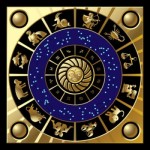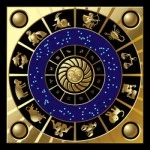This year, the 26 Degrees Scorpio New Moon is due to fall in my Scorpio third house , conjunct 28 Degrees South Node/Scorpio IC ( place of core, roots, home, family inheritance) close to Jupiter at 19 degrees of Scorpio, waiting yet another 11-12 year Jupiter Return in 2018..
Recent weeks since Jupiter entered Scorpio on 10th October 2017 have been turbulent to say the least: I know from my work, conversations with friends and colleagues, and from observing events in the wider world that there is a delving into deep murk – and hopefully cleansing and liberating process – going on. Most striking has been the way that aspects of the victim/abuser dynamic have been reversed. Victims, empowered by a few brave souls early on who have exposed their abuse and abusers, have spoken out across the world. It seems clear that we are living through a major cultural shift.
This is one of the many gifts of Jupiter in Scorpio: by our naming and exposing to the light some of the darkness at the heart of what being human means, it loses at least some of its negative power. However, as you will see from the extract quoted at the end of this post, darkness is at the core of Life’s power and vitality. We need the dark. We need to own and find ways of using both personal and collective power wisely. This to my mind is one of the biggest challenges of being human.
Pondering on this, and working through yet again some ancient childhood pain of my own these last few weeks, thereby releasing the unconscious energy used to hold it under, has taken up much of my focus. It has felt like a turbulent but liberating time.
I would be most interested to hear from my readers how it has been for you!
Now is Scorpio’s season
The thirty degree band of the sky as viewed from Earth, occupying from 270 to 300 degrees of the 360 degree zodiac, is the sector called Scorpio, the beginning of the final quarter of the zodiacal year. The Sun, our marker for the unfolding of the year and the changing of the seasons, entered Scorpio this year on the 23rd October, and leaves it for Sagittarius on the 22nd November – heading for Capricorn and the winter Solstice on 22nd December: the Sun’s most remote point for us in the North.
The astronomy leads us to the symbolic meaning of Scorpio. It is the time of late autumn: in this season the clocks go back, making darkness come earlier. It is the time of grass dying off, trees being stripped bare of leaves, a time of retreat: warmer clothes, more heating, putting things off, often, “….until the New Year”. Energy is lower. Winter flu scythes away many of our old folk. In Greek myth, the goddess Demeter goes into mourning for her beloved daughter Persephone, abducted to his Underworld realm by Hades, king of darkness. The Upper world mourns with her.
A Scorpio poet’s view
However – descent into darkness harbours its own deep, creative purpose. The Scottish poet Christopher Whyte, born with several planets in Scorpio, expresses that purpose with profound eloquence in this extract from his poem Rex Tenebrarum (King of Darkness), an English translation by the poet himself of a poem written in Scottish Gaelic:
“……How heavy the earth is above the seed
that struggles and thrusts, looking for nourishment
from the sun, and showers to freshen it!
But if it wasn’t rooted in the darkness,
in a warm, enclosed place filled with worms,
it could do nothing with air or light…..
King of the darkness, king of the world,
when I saw two faces in the mirror
superimposed, made one, I understood
that you have to be reconciled.
Unless the sapling knows
where its roots are sunk, and the whole
plant admits that life
and nourishment come from darkness;
unless it has unequivocal
love for what bore and raised it
how can there be a rich
summer flowering for our hopes? “
The astrological writer Paul Wright reveals in his fine, acclaimed book The Literary Zodiac, the way in which “writers express cosmic patterns in their creative work….”. In the above extract Christopher Whyte’s deep roots in the sign of Scorpio have enabled him powerfully and accurately to capture and express the essence of that sector’s meaning and challenge to us.
All powerfully charged dimensions of life belong to Scorpio: that stage of the human journey challenges us with those facets of life which most powerfully compel us, attract us, repel us, scare us – and transform us.
Another poet very strongly rooted in the sign of Scorpio, Dylan Thomas, talks about ‘deaths and entrances’. Thomas was born, fittingly, in Scorpio’s season: on the 27th October 1914, the year of the start of the Great War.
If we can face and grapple with our deepest attractions, compulsions, power drives, fears and repulsions, then we can experience – through staying with the struggle, seeking support where we can, having faith in the transformative dimensions of life – the symbolic death of aspects of the ‘old order’ holding us back from entry into a more complete and authentic expression of who it is we actually are. Jupiter’s presence in Scorpio for the next year offers us a magnificent opportunity to do just that.
*********
What does this New Moon, ushering in Scorpio’s season, mean to you? Do share your thoughts and feelings!
*********
Christopher Whyte has translated Rilke, Tsvetaeva and Pasolini into English. He published four novels between 1995 and 2000 and his fifth poetry collection, in Scottish Gaelic, appeared in 2013. His translation of the work of the Russian poet Marina Tsvetaeva (1892-1941) “Moscow in the Plague Year” was published in 2014 (New York, Archipelago Press 2014). He lives in Budapest, Hungary and writes full-time.
*********
950 words copyright Anne Whitaker/Christopher Whyte 2017
Licensed under Creative Commons – for conditions see Home Page



































































